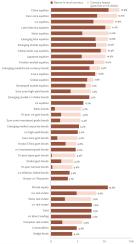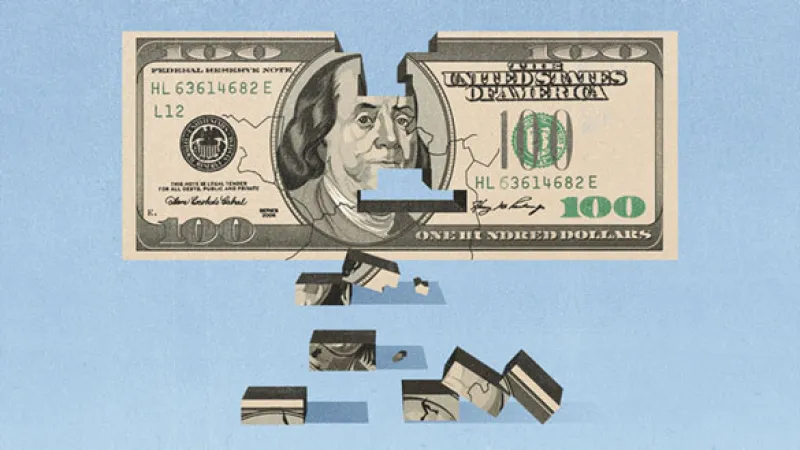By Pictet Asset Management Strategy Unit
Return Projections In The Next 5 Years
Dividing a portfolio’s investments more or less evenly between developed market stocks and bonds has proved a rewarding strategy over the past few decades. The annualised return investors have secured by pursuing this approach has been in the high single digits – gains that have come courtesy of steady economic growth, an almost continuous fall in interest rates and inflation, and relatively calm financial market conditions.Yet our forecasts covering the next five years indicate investors will need to plot a different course to achieve a similar result. This will involve allocating less capital to the developed world, increasing holdings of emerging market assets, and investing far more in alternatives, particularly commodities and gold.
Asset Class Returns – The Next 5 Years

Source: Pictet Asset Management, forecast period 30.04.2022 - 30.04.2027
A key finding from our research is that returns from equity markets will fall victim to an unfavourable shift in the business cycle. The global economy is approaching the end of its post-Covid expansionary phase. Tighter financial conditions, a peak in US jobs growth and large output gaps all point to a recession this year or next. This has significant investment implications. There is a considerable difference between making an allocation to stocks in the lead-up to a slump and doing the same once recovery begins to take root. And that’s true even for those who invest over long-time horizons.
Our analysis of the past 100 years shows that an initial investment in developed market stocks after the end of a recession delivers a price return of 10 per cent a year for the following five years; investing before a recession, as would be the case today, has by comparison typically delivered only a 4 per cent annualised return – a shortfall of some 6 per cent per year.
Another obstacle for developed equity markets is a looming squeeze on corporate profit margins. With wages and raw materials prices rising, more stringent regulations adding to the costs of doing business and the pro-spect of a rise in corporate taxation, margins can be expected to fall by a cumulative 10 per cent over the next five years.
But it is not only developed market stocks that will struggle to match their past performance. Developed government bonds will also labour to deliver what investors require of them over the next five years. Such securities have traditionally served as an anchor for a diversified portfolio – a crucial source of income and capital protection during periods of economic uncertainty.
Yet outside the US – where initial valuations for government and investment grade bonds are becoming more attractive thanks to this year’s spike in yields – returns from developed market fixed income will fall below inflation over the next five years.
To make up for the lacklustre returns and income on offer from the developed world, investors will have to strike a delicate balance. On the one hand, our analysis indicates that, on average, portfolios will require higher allocations to stocks and bonds from emerging markets, as well as commodities – riskier investments that offer higher prospective returns. On the other, it would be prudent to accompany this dialling up of risk with a higher allocation to assets that do not move in lockstep with mainstream stocks and bond markets, such as liquid alternatives, gold and private assets.
Within emerging markets, Chinese stocks look particularly attractive while emerging market bonds’ income-generating potential should grow, enhanced by what we believe will be a steady appreciation in developing world currencies.
Among alternatives, non-energy commodities look especially appealing; their returns should be in excess of inflation over the next half a decade.
Our analysis also shows real estate and private equity both outperforming developed market equities over our five-year forecast horizon. Allocations to gold and infrastructure, meanwhile, make sense at this juncture as a means to diversify risk and protect portfolios against the possibility of stubbornly high – or volatile – inflation.

The next five years, then, present investors with a conundrum. They can remain faithful to the traditional balanced portfolio of mainstream bonds and stocks but, in doing so, accept a lower return and potentially higher volatility. Or they can take a less familiar path and allocate more of the capital to alternative assets. Our analysis suggests, the second option is the wiser course.
Download the pdf to discover the full investment outlook
Marketing Material
Disclaimer
The information and data presented in this document are not to be considered as an offer or solicitation to buy, sell or subscribe to any securities or financial instruments. Information, opinions and estimates contained in this document reflect a judgment at the original date of publication and are subject to change without notice. Pictet Asset Management (Europe) S.A. has not taken any steps to ensure that the securities referred to in this document are suitable for any particular investor and this document is not to be relied upon in substitution for the exercise of independent judgment. Tax treatment depends on the individual circumstances of each investor and may be subject to change in the future. Before making any investment decision, investors are recommended to ascertain if this investment is suitable for them in light of their financial knowledge and experience, investment goals and financial situation, or to obtain specific advice from an industry professional. The value and income of any of the securities or financial instruments mentioned in this document may fall as well as rise and, as a consequence, investors may receive back less than originally invested. Past performance is not a guide to future performance






